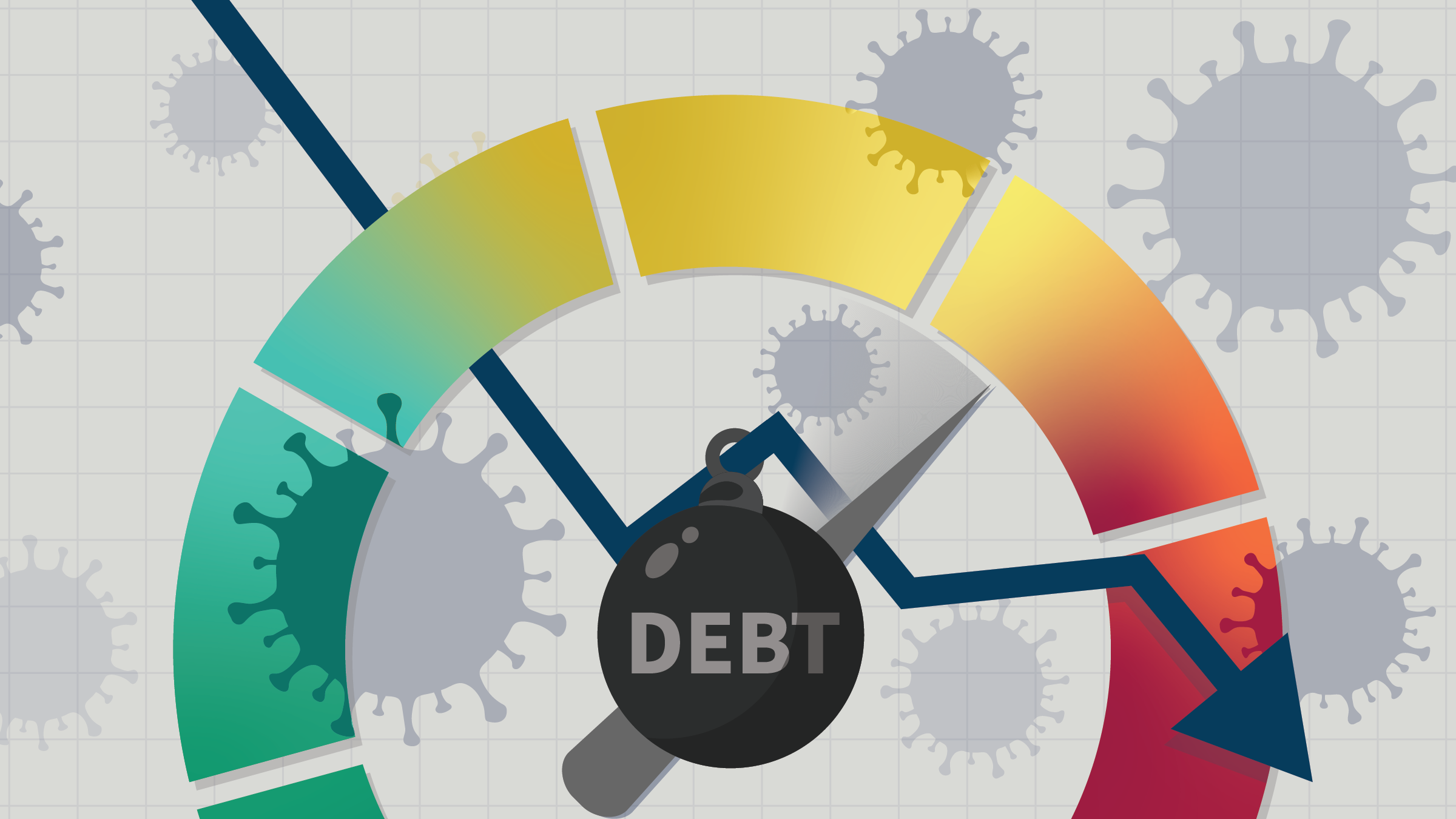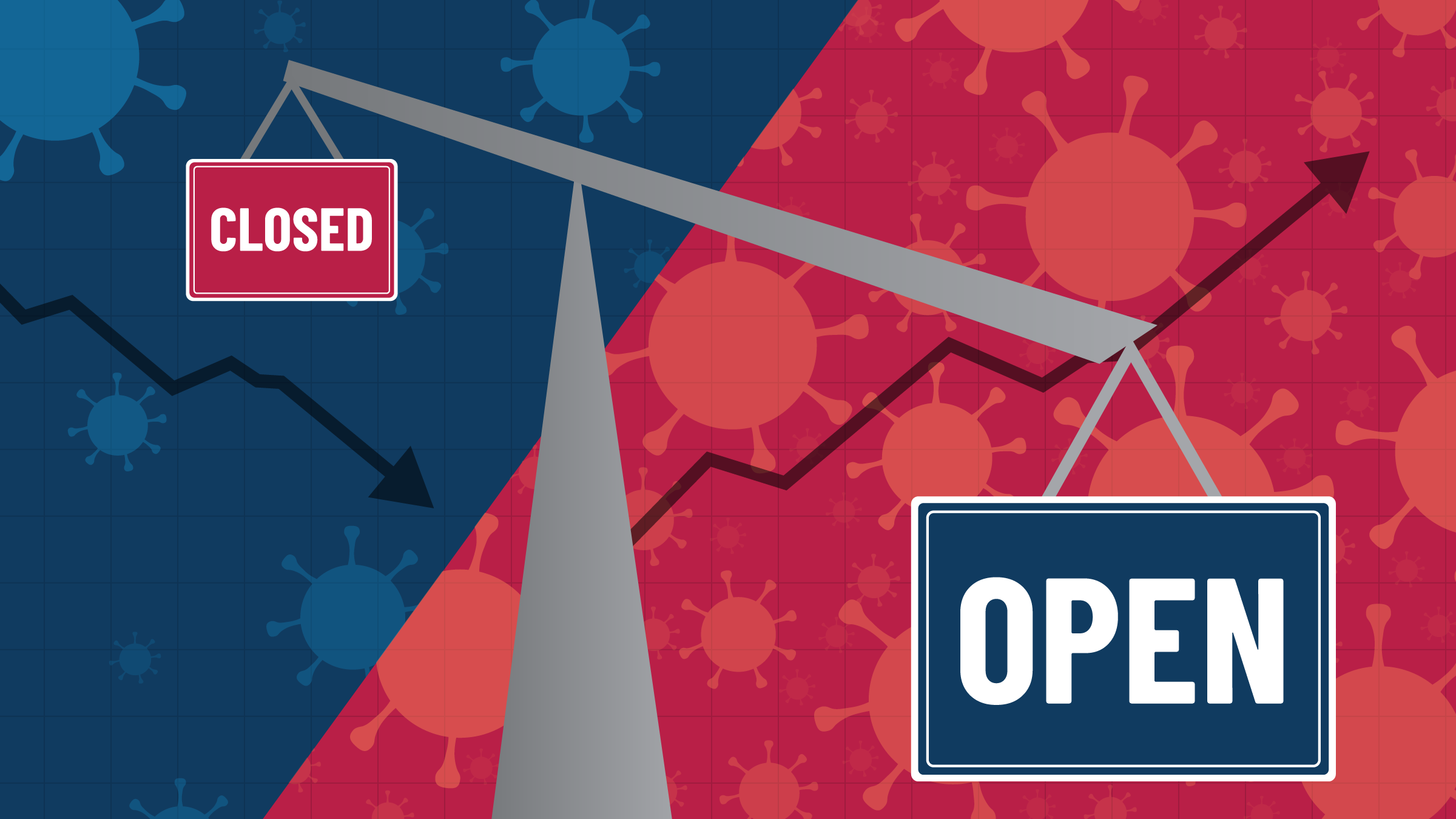From its earliest days in Wuhan, the coronavirus has been a moving target. And as it moved, multiplied, and mutated, health workers and policymakers struggled to keep up, changing treatment protocols, business shutdowns, and public health restrictions over time. Vaccines, masks, and distance slowed the pace and, blessedly, saved lives.
Economists have run this marathon, as well, with a staggering output of pandemic-related research. It too has evolved. Early papers were predictive, later work was proscriptive, and now economists are descriptive—looking back at the massive toll of the minute virus and refining early models.
Last May, Minneapolis Fed Assistant Director of Policy and Monetary Advisor Cristina Arellano examined the likely impact of the pandemic on emerging markets. These less-developed nations came to the pandemic with weak economies and fragile health care systems, and many relied on international loans to finance investment and consumption. Arellano’s paper, with colleagues Yan Bai of the University of Rochester and Gabriel Mihalache of Stony Brook University, projected the likely impact of the pandemic as it surged in these countries.
Their research integrated a standard epidemiological model with a sovereign debt macroeconomic model. This framework presented the conventional trade-off between saving lives and sustaining the economy, but added foreign debt and the inescapable pressure to pay it down. It showed that policymakers had no easy choices. Business shutdowns would save lives, but curb output and generate less income and lower consumption. Governments could try to borrow from abroad to compensate for lost output and consumption, but existing debt and reduced output would make borrowing expensive if not impossible.
The bottom line: The burden of paying off foreign loans would pressure governments toward less strict lockdown policies and more disease. Debt would be deadly. “Economies that start the outbreak with more debt will suffer … more fatalities and more prolonged defaults,” the economists write.
The pain of default risk
A year later, much has changed. But the pandemic still lays waste to the populations and economies of the developing world. As this is written, India is setting daily COVID-19 infection records. Latin America has been ravaged by new variants. Smaller nations suffer similar fates, with less attention from the outside world.
And Arellano, Bai, and Mihalache have returned to the question of emerging market debt and COVID-19. In a revision of last year’s staff report, the economists use a refined version of their earlier model to again examine the interplay of debt and the disease. The new model reinforces their earlier finding that sovereign debt pressures magnify the costs of COVID-19. Debt burden, they write, “weighs heavily on the economy’s ability to mitigate infection through social distancing.”
With a quantitative study of Latin America, they put numbers to the crisis, underlining the large cost in output losses, debt defaults, and elevated death tolls. They then analyze financial market frictions in this context and illustrate the powerful interaction of debt pressures and pandemic paths.
The paper’s last major section evaluates the impact of international debt relief efforts and finds that they can provide “considerable benefits” by reducing pressure to prematurely end lockdowns in order to boost output and repay debt. Debt relief programs “deliver sizable social gains that accrue mainly to the country and to a lesser extent to its private lenders,” they write, “with no cost to financial assistance entities orchestrating the programs.”
It’s a rare win-win in a world of deadly trade-offs. And as Arellano adds via email, “Our application is for countries, but this interaction is also at the individual level.” Poor people, like poor nations, would benefit from credit relief so they can reduce work hours to avoid the virus.
A refined model
To arrive at their findings, the economists begin with a small, open-economy model in which the government borrows internationally, with an option to default. Output depends on labor and productivity. This economy is hit by an epidemic that follows the susceptible, infected, recovered (SIR) dynamics modeled by epidemiologists shortly after the 1918 pandemic. Disease, and the economy, can be altered by implementing social distancing or lockdown measures.
In their model, as in reality, the pandemic leads to loss of life and disruptions in output. Governments can respond by borrowing internationally and/or implementing lockdown policies. Again, the model clarifies the dilemmas. Reduced output due to the pandemic makes it difficult to repay debt, increasing default risk and making lenders less likely to lend. That, in turn, “worsens the epidemic,” write the economists, because it raises the cost of social distancing. In brief, default risk lowers the likelihood of social distancing and raises death tolls.
In a quantitative exploration, the economists match their model’s parameters to data from 11 Latin American nations. The area has suffered dramatically from COVID-19 and debt pressures, so the economists compile data on average daily death rates, declines in workplace traffic, government debt relative to GDP, and sovereign spreads (higher interest rates that nations pay to borrow due to lender fears of default).
The model simulations project the evolution of deaths, lockdown intensity, debt-to-GDP ratio, sovereign spreads, economic output, and other variables. They predict an eventual death toll from the pandemic of 840,000 people, a staggering number but far lower than that projected if no lockdowns occurred. The debt-to-output ratio increases by 10 percent and falls very slowly. Output drops by about 18 percent.
The quantitative analysis suggests that by creating a joint health, debt, and economic crisis, the pandemic has a “scarring effect” on output, consumption, and sovereign spreads that is “more persistent than the health crisis itself.”
Financial frictions and relief thereof
Financial market frictions play a substantial role in exacerbating the pandemic’s impact on debt-pressured economies. The economists analyze this by looking at two theoretical extremes: a world with perfect financial markets, where loans are readily available at low interest rates, and a world of financial autarky, where nations are economically isolated and international lending doesn’t exist.
In autarky—where borrowing is not an option—“the cost of social distancing is larger,” write the economists, “leading to a choice of shorter and more limited lockdowns.” The consequence is severe: The death toll is 20 percent higher. Perfect markets, in contrast, lower the marginal cost of social distancing and business shutdowns, leading to far fewer COVID-19 deaths.
“That financial conditions greatly impact outcomes during the epidemic suggests that international assistance programs can deliver considerable benefits,” the economists write, noting that international organizations including the International Monetary Fund and the World Bank have implemented debt relief programs during the pandemic.
They close with an evaluation of those potential benefits. A default-free, long-term loan from an external lending entity would, by reducing deaths, improve a country’s welfare by 7.5 percent relative to a baseline without such a loan and raise lender welfare by 4.7 percent by reducing reliance on defaultable debt. “The overall social gain from the loan is a sizable 12.2%, as the country and its lenders gain, and the official lender breaks even.” A voluntary debt restructuring between a country and its lenders would reduce debt levels and boost economic output, with a 10.6 percent welfare gain.
Revisiting crisis
Arellano, Bai, and Mihalache have frequently collaborated on sovereign debt issues. Seldom has their work dealt with such extremes of life and death. This paper makes clear that with financial frictions, the death toll of the pandemic and severity of debt crisis “reinforce each other as social distancing becomes increasingly costly.”
And, again, this interplay between credit access and epidemic outcomes is present at the individual level as well. Those with less ability to borrow are likely to suffer greater pandemic consequences because they can’t take out a loan to cover expenses and work fewer hours.
Fortunately, debt relief programs under way and under consideration can provide considerable benefit by easing default risk. By illustrating the dynamics in play, this research paper can aid in design and implementation of such efforts. As they modestly write, “We hope that our work contributes to the discussion.”





